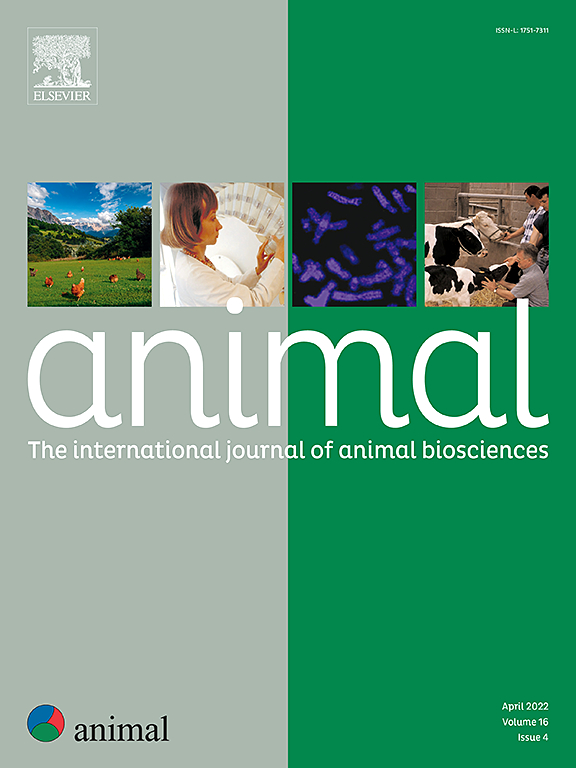Improving genomic prediction accuracy of pig reproductive traits based on genotype imputation using preselected markers with different imputation platforms
IF 4
2区 农林科学
Q1 AGRICULTURE, DAIRY & ANIMAL SCIENCE
引用次数: 0
Abstract
Genomic prediction has been widely applied to the pig industry and has greatly accelerated the progress of genetic improvement in pigs. With the development of sequencing technology and price reduction, more and more genotype imputation panels of pig have been investigated, providing an effective and economical method to further study the genetic variation of pig economic traits. In this study, the imputation from 80 k Single Nucleotide Polymorphism chip data of 832 Large White pigs to whole-genome sequencing genotypes was performed by Swine Imputation Server, Pig Haplotypes Reference Panel (PHARP), Animal Genotype Imputation Database and 1k-pig-genomes four thousand-pig imputation panels. Then, linkage disequilibrium (LD) pruning and genome-wide association study (GWAS) preselected markers strategies were utilised to compare the genomic prediction accuracy of the different imputation data for reproductive traits, respectively. Our results showed that the PHARP panel exhibited the best genomic prediction accuracy among the four imputation panels. Meanwhile, the genomic prediction accuracy of the imputation data can be further improved by utilising the LD pruning and GWAS preselected marker strategies. In conclusion, our study provides insights into imputation data for pig genetic breeding.
基于不同输入平台预选标记基因型输入提高猪生殖性状基因组预测精度
基因组预测已广泛应用于养猪业,极大地促进了猪的遗传改良进程。随着测序技术的发展和价格的降低,越来越多的猪基因型植入面板被研究,为进一步研究猪经济性状的遗传变异提供了一种有效而经济的方法。本研究通过猪输入服务器、猪单倍型参考面板(PHARP)、动物基因型输入数据库和k-猪基因组4千头猪输入面板,将832头大型白猪的80 k单核苷酸多态性芯片数据进行全基因组测序基因型的输入。然后,利用连锁不平衡(LD)修剪和全基因组关联研究(GWAS)预选标记策略,分别比较了不同输入数据对生殖性状的基因组预测精度。结果表明,在4个基因组图谱中,PHARP图谱的基因组预测精度最高。同时,利用LD剪枝和GWAS预选标记策略可以进一步提高输入数据的基因组预测精度。总之,我们的研究为猪遗传育种的插补数据提供了见解。
本文章由计算机程序翻译,如有差异,请以英文原文为准。
求助全文
约1分钟内获得全文
求助全文
来源期刊

Animal
农林科学-奶制品与动物科学
CiteScore
7.50
自引率
2.80%
发文量
246
审稿时长
3 months
期刊介绍:
Editorial board
animal attracts the best research in animal biology and animal systems from across the spectrum of the agricultural, biomedical, and environmental sciences. It is the central element in an exciting collaboration between the British Society of Animal Science (BSAS), Institut National de la Recherche Agronomique (INRA) and the European Federation of Animal Science (EAAP) and represents a merging of three scientific journals: Animal Science; Animal Research; Reproduction, Nutrition, Development. animal publishes original cutting-edge research, ''hot'' topics and horizon-scanning reviews on animal-related aspects of the life sciences at the molecular, cellular, organ, whole animal and production system levels. The main subject areas include: breeding and genetics; nutrition; physiology and functional biology of systems; behaviour, health and welfare; farming systems, environmental impact and climate change; product quality, human health and well-being. Animal models and papers dealing with the integration of research between these topics and their impact on the environment and people are particularly welcome.
 求助内容:
求助内容: 应助结果提醒方式:
应助结果提醒方式:


